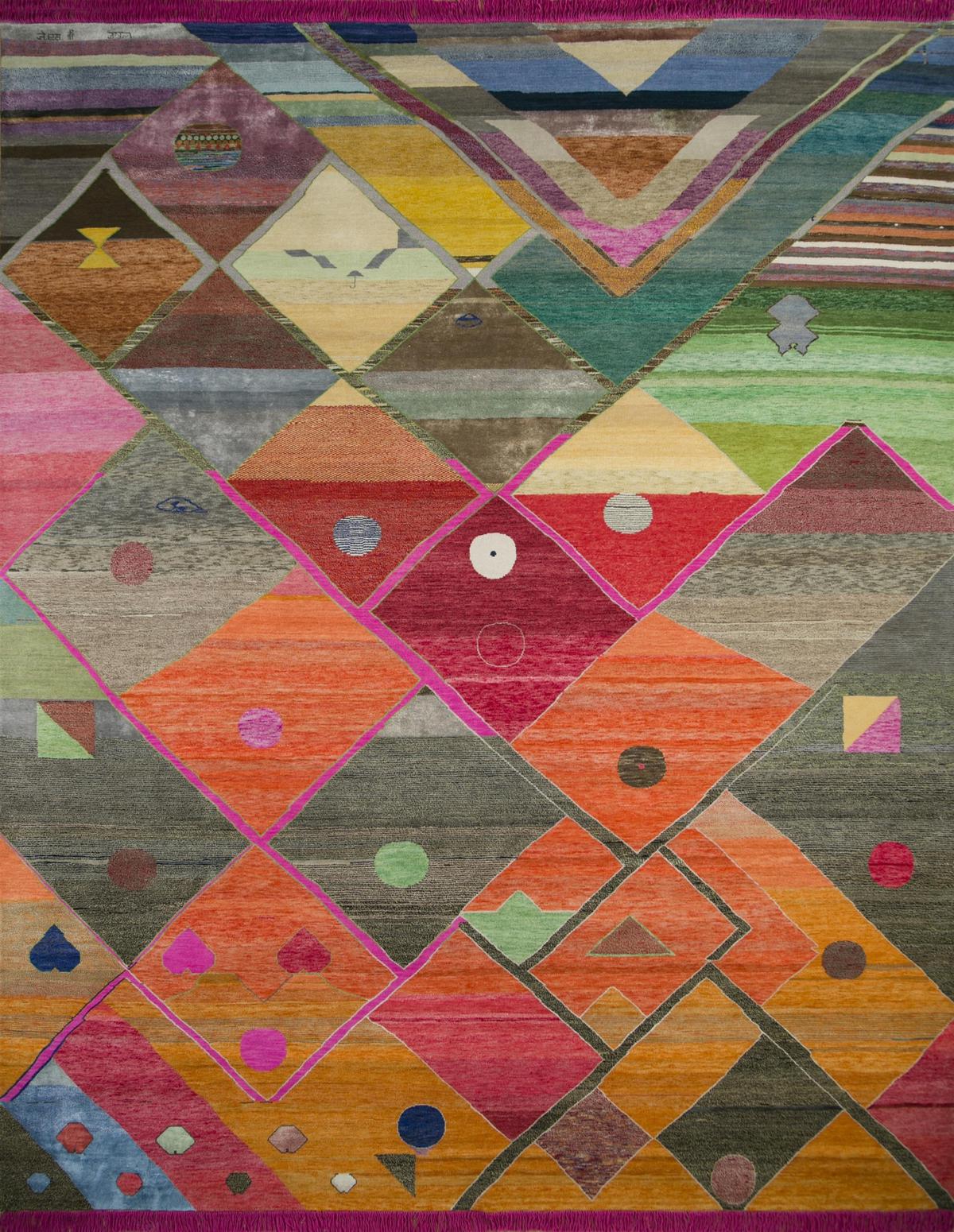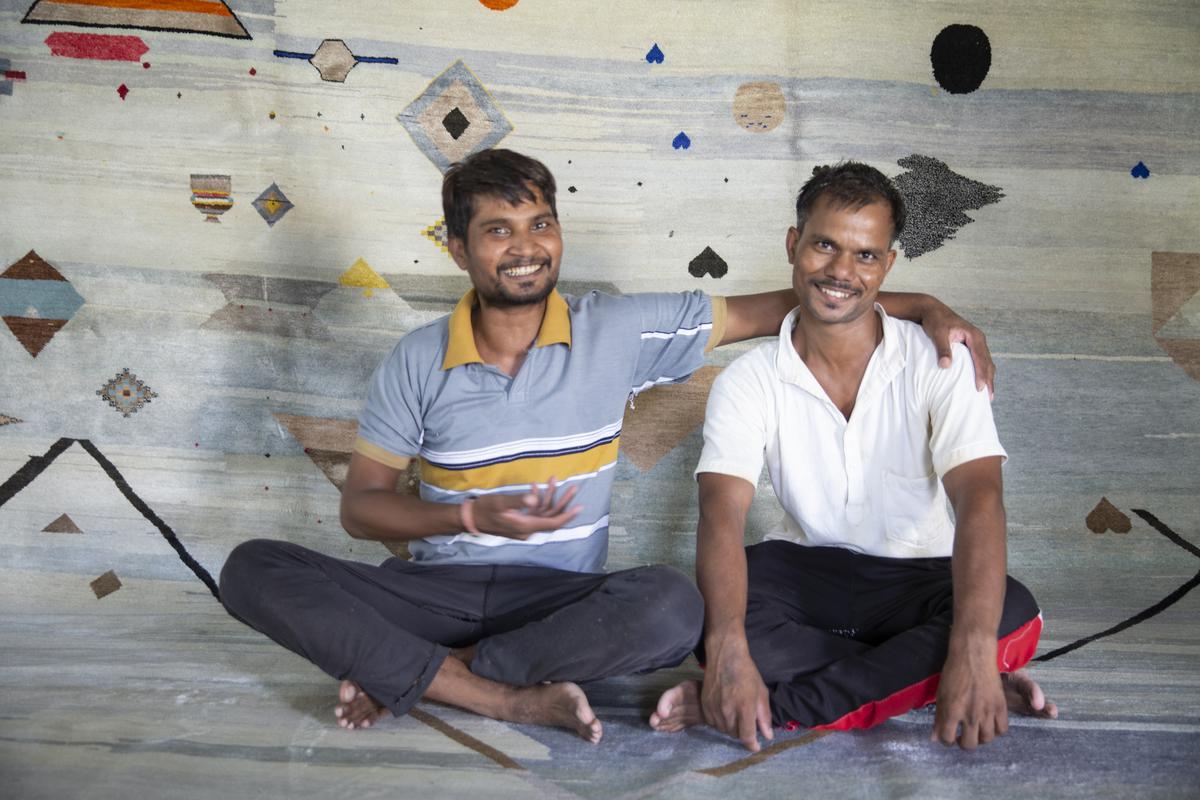Prisoners turn weavers courtesy Jaipur Rugs’ Freedom Manchaha initiative

A weaver with his creation
| Photo Credit: Special Arrangement
Fading cultural traditions, memories of one’s wife, daily prayers, and the trajectory of life. These are just a few ideas that have been brought alive on the loom by Jaipur Rugs’ Freedom Manchaha project. Launched in 2018, the sustainable development initiative has long-term prisoners of Jaipur Central Jail, Jaipur Open Jail, Alwar Central Jail, and jails in Bikaner, Dausa, Amer, and Bharatpur designing rugs. “Every rug showcases the potential of one’s imagination,” says Yogesh Chaudhary, director, Jaipur Rugs, adding that the primary idea behind the initiative is to make the inmates self-reliant, and support their loved ones as “25% of the earned income is contributed to their families”.
Till date, 200 rugs have been crafted under Freedom Manchaha, and through the Jaipur Rugs Foundation (JRF), explains Yogesh. Several training workshops are conducted for the skill development of prisoners as a part of the project. “While learning to weave, inmates are encouraged to showcase their creativity, and the foundation also helps them open bank accounts to receive payments for their work directly.” Take for instance, Yaarana (meaning, friendship) designed by BP Singh, Kaabil, and Zamaal Badhshah. BP Singh, who loves to play cricket, was reminiscing his younger days in Uttar Pradesh while weaving the rug that has motifs of balls, kites, dots, lines and hearts. “The rug symbolises their friendship in jail, and incorporates vibrant colours which are a reflection of their personality,” he adds.

Yaarana designed by inmates BP Singh, Kaabil and Zamaal Badhshah
| Photo Credit:
Special Arrangement
Each rug is made of 2,22,184 individual knots in every square metre, using hand-spun leftover yarn in carpet production which otherwise cannot be used, he adds. Depending upon the raw material, size and quality of the rug, it takes an inmate anywhere between three and 10 months to weave a carpet.
The looms at the open prisons (places where prisoners are trusted to complete sentences with minimal supervision and perimeter security) are set up by the foundation, and a branch manager oversees all the jail projects . “Each jail is given one trainer by JRF who conducts workshops and training programmes. Inmates are trained between three and sixmonths, and taught how to explore colours and various materials such as wool, and bamboo silk,” says Yogesh. At the later stage, they are taught weaving and how to build their own colour rhythms into carpets.

Weavers with their creation
| Photo Credit:
Special Arrangement
In Raasta (meaning, way), by Mudassir and Majid, the weavers have depicted lost paths from their villages in vibrant shades of purple and blue. It portrays their desire to visit their homes far away. Majid wants to meet his four children whom he hasn’t seen in five years, while Mudassir wants to return to his family. The rug is a portrayal of incomplete things in his life in the form of half-woven villages, ways and shakarparas, a sweet snack,” concludes Yogesh.
Upwards of ₹ 50,000 on jaipurrugs.com
For all the latest Entertainment News Click Here
For the latest news and updates, follow us on Google News.
